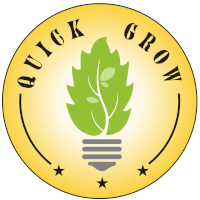
The Qatar World Cup Organising Committee expects over 1.2 million fans to enter Qatar during the World Cup, with an average stay of 4-5 days. The massive influx of visitors into Qatar has made supplying the country extremely challenging. Qatar has a tropical desert climate with long, hot summers, with highs of 50 degrees Celsius, and a severe lack of fresh water resources, with very little agricultural land, and vegetables, fruit and even fresh water are mainly imported.

A few dozen kilometres north of the Qatari capital Doha is Alfardan Farm, an important agricultural production group in Qatar, which produces mainly seasonal vegetables. This farm uses a production block of “Chinese intelligent LED plant factory high-tech agricultural technology”, which is considered to be the most advanced integrated agricultural technology currently available in Qatar, and has successfully “made the rounds” in Qatar.

What is a plant factory?
At present, there is no unified international definition of plant factories, but the core of plant factories at home and abroad has always been the same, using indoor space as a carrier, relying on indoor facilities agricultural planting system, through artificial intervention to change environmental variables to achieve efficient output of agricultural systems. The environmental conditions of plant growth and development, such as temperature, humidity, light, carbon dioxide concentration and nutrient solution, are automatically controlled in order to build an environment more suitable for efficient plant growth, so that the growth and development of plants in the facility is not or rarely constrained by natural conditions, thus partially or even completely freeing agriculture from its dependence on the natural environment.

What are the advantages of indoor facility agriculture?
Firstly, hydroponics is one of the most important vegetable growing techniques in indoor facility agriculture. Indoor facility agriculture uses a closed-loop hydroponic irrigation system to provide a precisely blended water solution directly to the plant roots, which can use over 90% less water than traditional farming systems.

Secondly, compared to the single-layer planting of traditional arable land, plant factories can achieve multi-layer planting of 6-10 layers, significantly increasing the planting rate per unit area and improving land utilisation. At the same time, the growth cycle of vegetables grown in indoor facility agriculture is accelerated. In the case of lettuce, for example, it takes more than 60 days from seed germination to seedling picking using ordinary field cultivation methods. Compared to field growing, Italian lettuce grown using hydroponics has a germination period of 2 days, a small seedling period of 8 days, a medium seedling period of 8 days and an adult seedling period of 18 days, which is only 36 days, nearly double the growth cycle. Multi-layer planting and shorter growing cycles can increase annual crop yields significantly.
In addition, the nutritional content of vegetables grown in indoor facilities is high. For example, lettuce grown in indoor facilities contains nearly ten times more vitamin A and carotene B than the standard content of a typical field planting.
